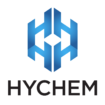What are the differences between epoxy, MMA and polyurethane coatings?
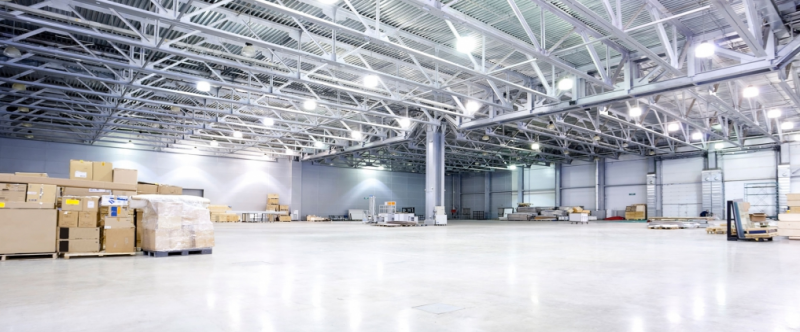
Here is a breakdown of the curing properties, applications and characteristics of each concrete protection system, to help you make better informed decisions when choosing your next coating solution.
Epoxy
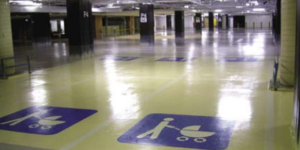
“Epoxy resins can be applied in a range of thicknesses for a multitude of applications including general flooring for commercial and industrial applications, decorative flooring, trowel-applied applications for heavy duty environments, spray-on linings and protective coatings as well as grouts for machinery bedding.
“At Hychem we manufacture a range of epoxies with different characteristics and capabilities to suit almost every application, tailoring our products to meet the specific demands of our Australian conditions,” said Mr Bauer.
Applications:
- Industrial and commercial flooring
- Concrete sealant for carparks
- Secondary containment protection
- Grouting applications
- Coatings for concrete wastewater pipes and tanks
Key characteristics:
- Strong adhesion to the substrate
- High mechanical properties
- Corrosion resistance
- Resistance to chemicals
- Can have antimicrobial properties
- Abrasion resistance
- Range of colours and textures available
- Low VOC
Strength: Compressive strengths of >120Mpa
Thickness of application: 100 microns to >6mm
UV stability: Good UV stability although generally not as good as some PU and PMMA, however Hychem Glaze 3 or SF20UV have increased UV stability.
Cure time: 8 hrs at 25℃ for dry touch. 24hrs before it can be walked on.
Temperature resistance: 60℃ +.
Chemical Structure
The majority of epoxy products are based on a reaction between diglycidyl ether of bisphenol A (DGEBA – epoxy resin) and an amine hardener. These components react to give a film forming a crosslinked polymer.
Novolac epoxy resins for high temperatures
Novolac is another class of epoxy resin that has higher functionality than standard DGEBA resulting in a higher crosslink density.
Novolac epoxies provide an increase in chemical resistance by about 30 per cent over regular epoxies, as well as a significant increase in resistance to sulfuric acid and heat.
Choosing the curing agent
The curing agent plays a major role in determining the properties of the final cured epoxy. These properties include cure speed, gloss level, chemical resistance, strength and UV resistance.
“A hardener used in an epoxy for topcoats is likely different from that used for machinery grouting.
“An epoxy topcoat needs to produce a high quality finish where properties such as compressive strength are not as important in a thin film.
“Conversely, compressive strength and other properties such as creep and heat release are very important in a machinery grout and the amine hardener plays a big part in this,” said Mr Bauer.
Methyl Methacrylate (MMA)
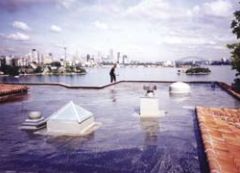
“The main advantage of MMA flooring systems is their very fast cure time and the ability to be applied below zero degrees. Another feature is their excellent weather resistance.
“MMA can be formulated to produce a highly flexible waterproofing solution with the advantage of having excellent crack-bridging characteristics while also being trafficable.
“This highly flexible MMA is a European-manufactured system, solving the problem of outside carpark waterproofing that requires both increased flex as well as high durability to withstand the impact of regular car traffic.”
Application:
- Fast turnaround flooring
- Traffic marking
- Anti-slip pedestrian walkways
- Crack-bridging applications in high traffic areas
Key characteristics:
- Extremely fast curing
- Can have anti-microbial qualities
- Strong odour which can be mitigated with correct ventilation at the application site
- Varying degrees of slip resistance can be attained
- Range of colours available
- High flex capability
- Crack-bridging capability
- Trafficable membranes
- High durability
Tensile Strength: 8Mpa
Thickness of application: 500 microns to 6mm full trowel application.
UV stability: High UV stability making them perfect for outdoor applications such as car parks, walkways and traffic markings.
Cure time: 40 minutes to 1 hour
Temperature resistance: 70℃
Chemical Structure
MMA is a fairly simple molecule and is often formulated with other methacrylates such as 2-ethylhexyl methacrylate and 2-hydroxyethyl methacrylate.
Curing
Polymerisation is initiated by an organic peroxide.
Polyurethane
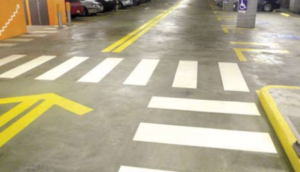
Applications:
- Antimicrobial flooring in harsh, heavy duty environments
- Chemical bunds
- Roads and bridges
- Balconies and patios
- Crack-bridging
- Carpark waterproofing
Key characteristics:
- Odourless
- Fast cure
- Trafficable
- Hygienic and safe surface finish
- Thermal shock resistant
- Chemically resistant to acetic acid, lactic acid and oleic acid from vegetable and animal fats
- High versatility in adhesion to different surfaces
- High abrasion resistance
- High resistance to corrosion
- High flexibility
- Low curing temperature capability
- Strong adhesion to the substrate
- Unlimited film build
Chemical Structure
Polyurethane coatings from Hychem are either one-pack moisture cured or two pack systems based on a polyol and an isocyanate.
